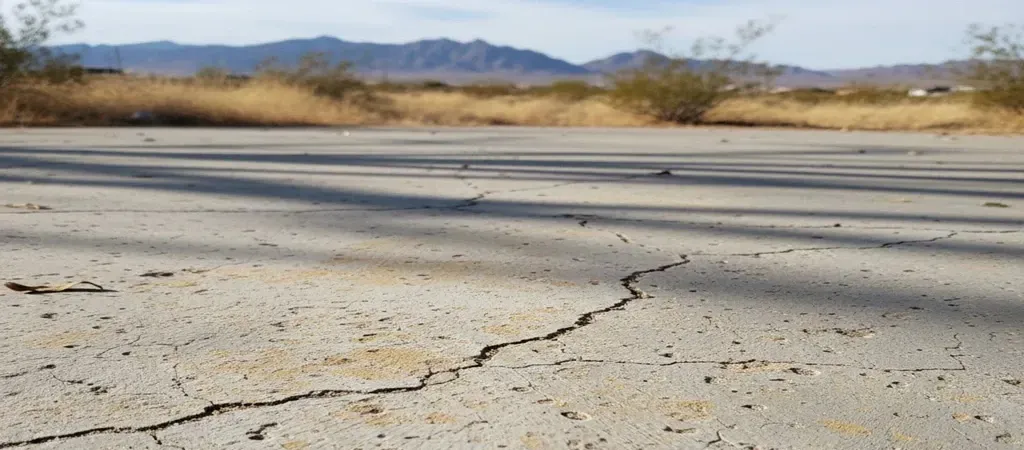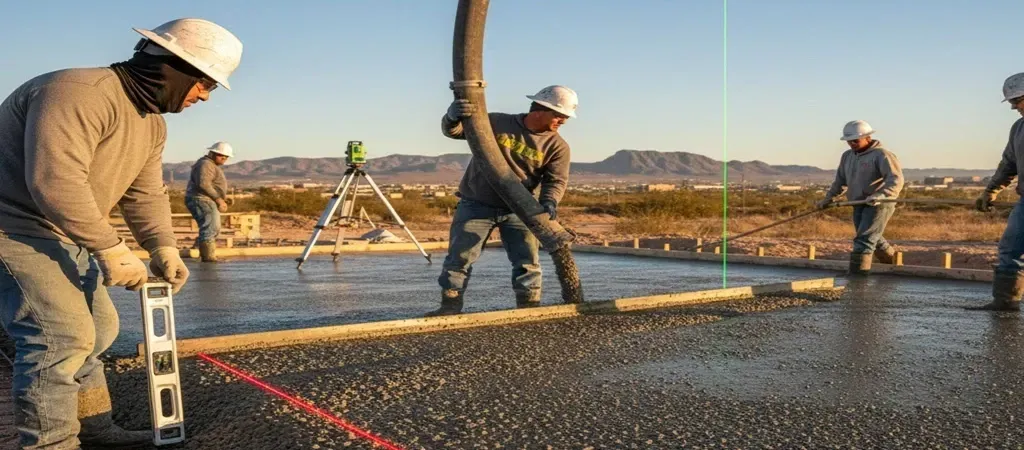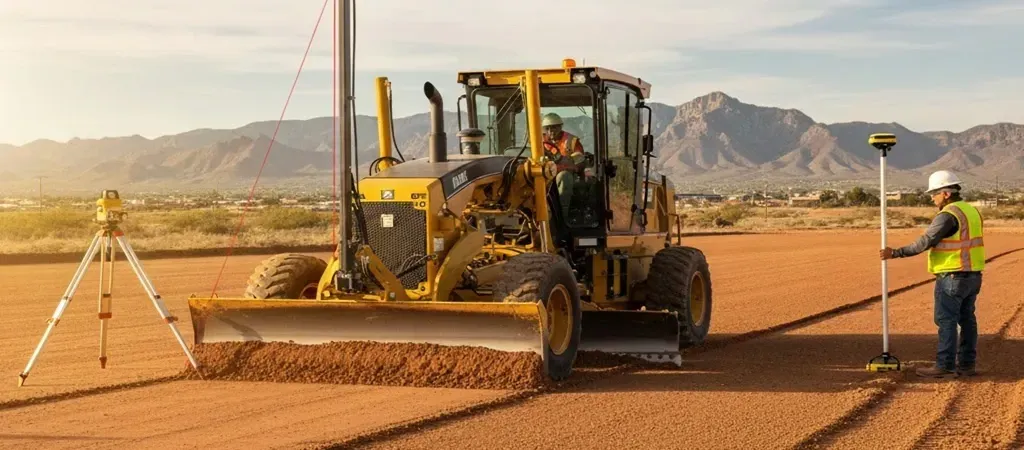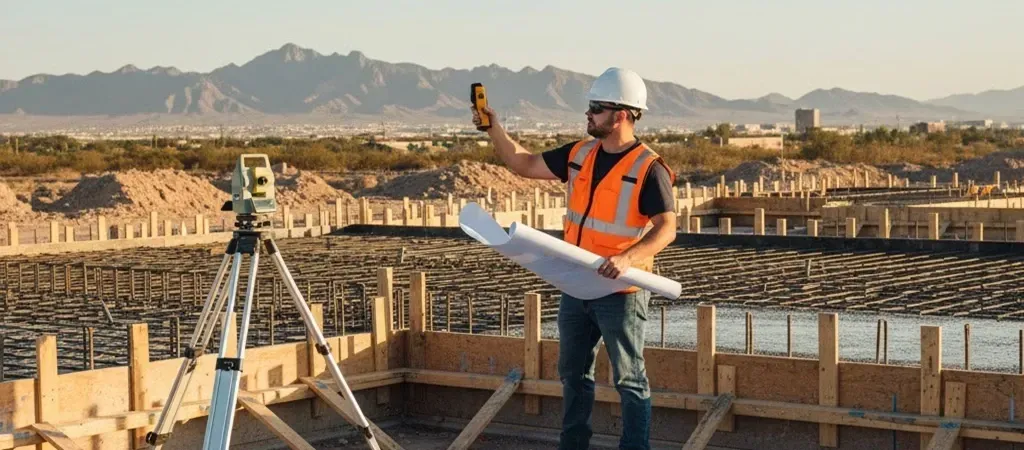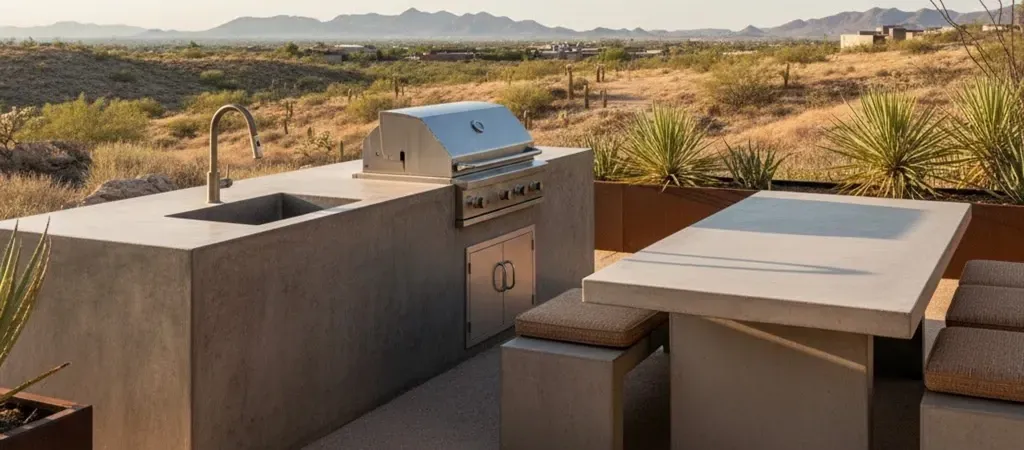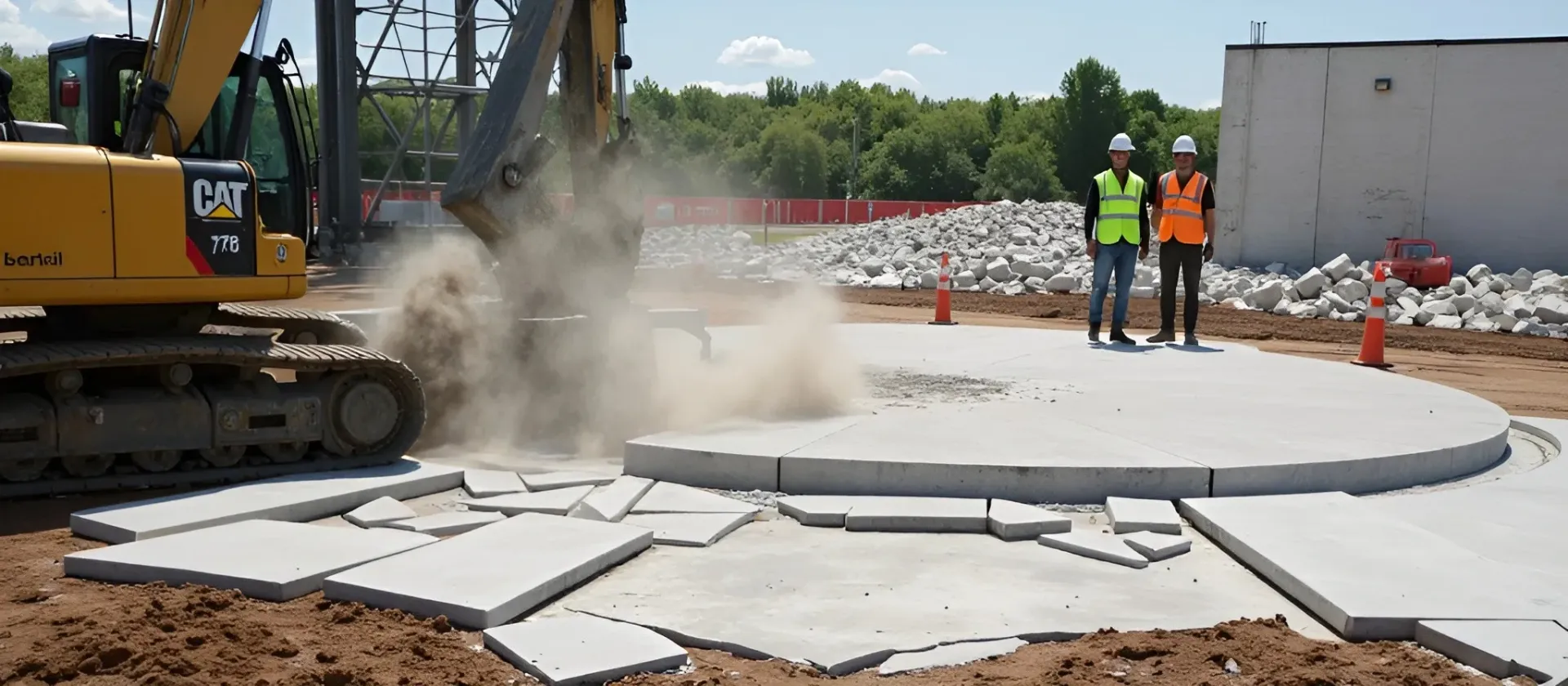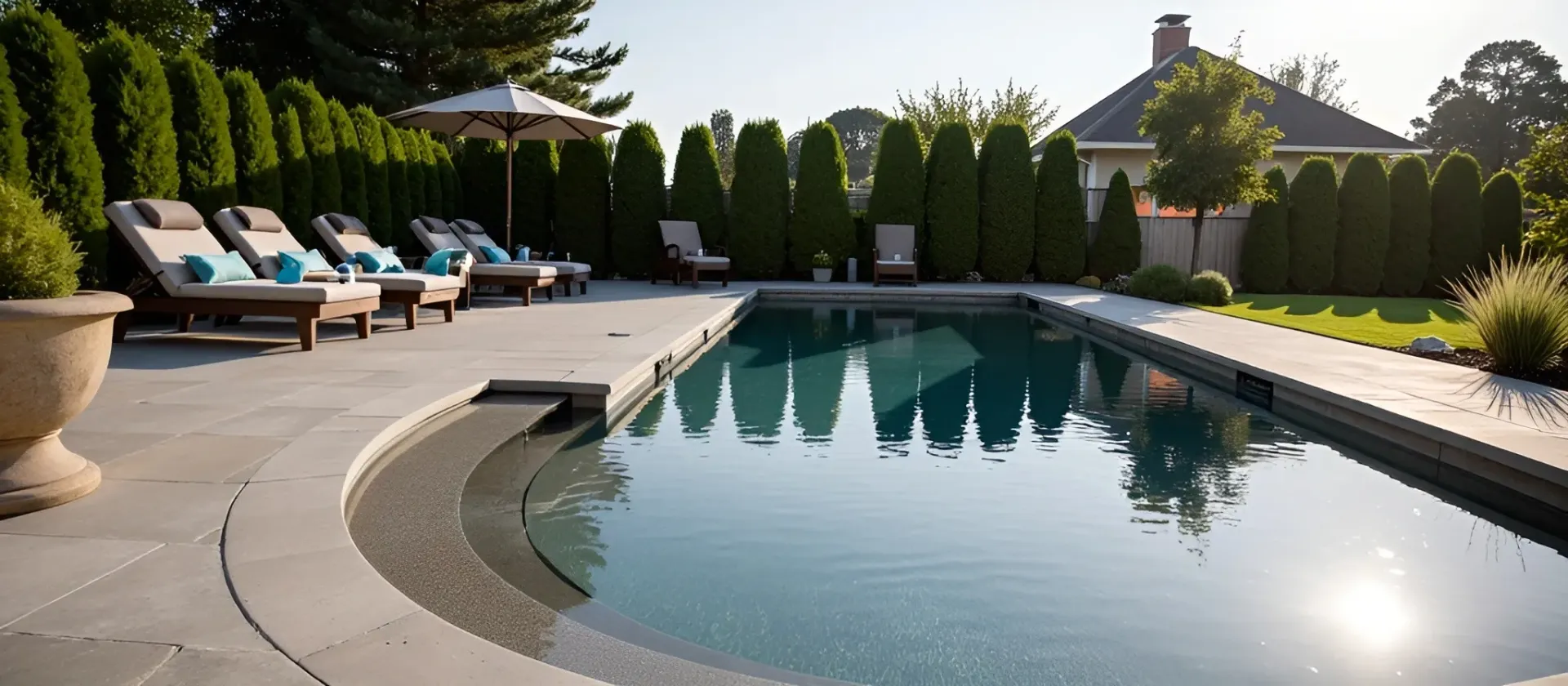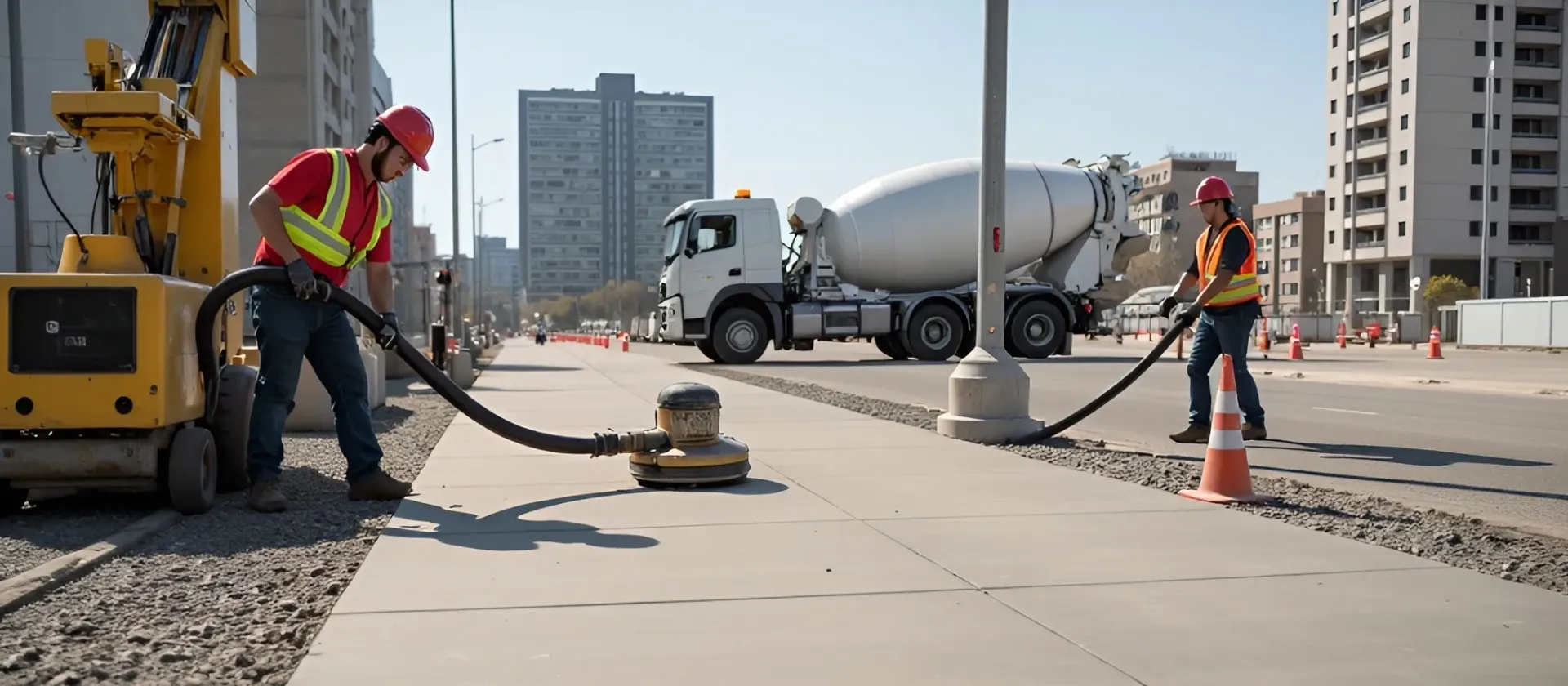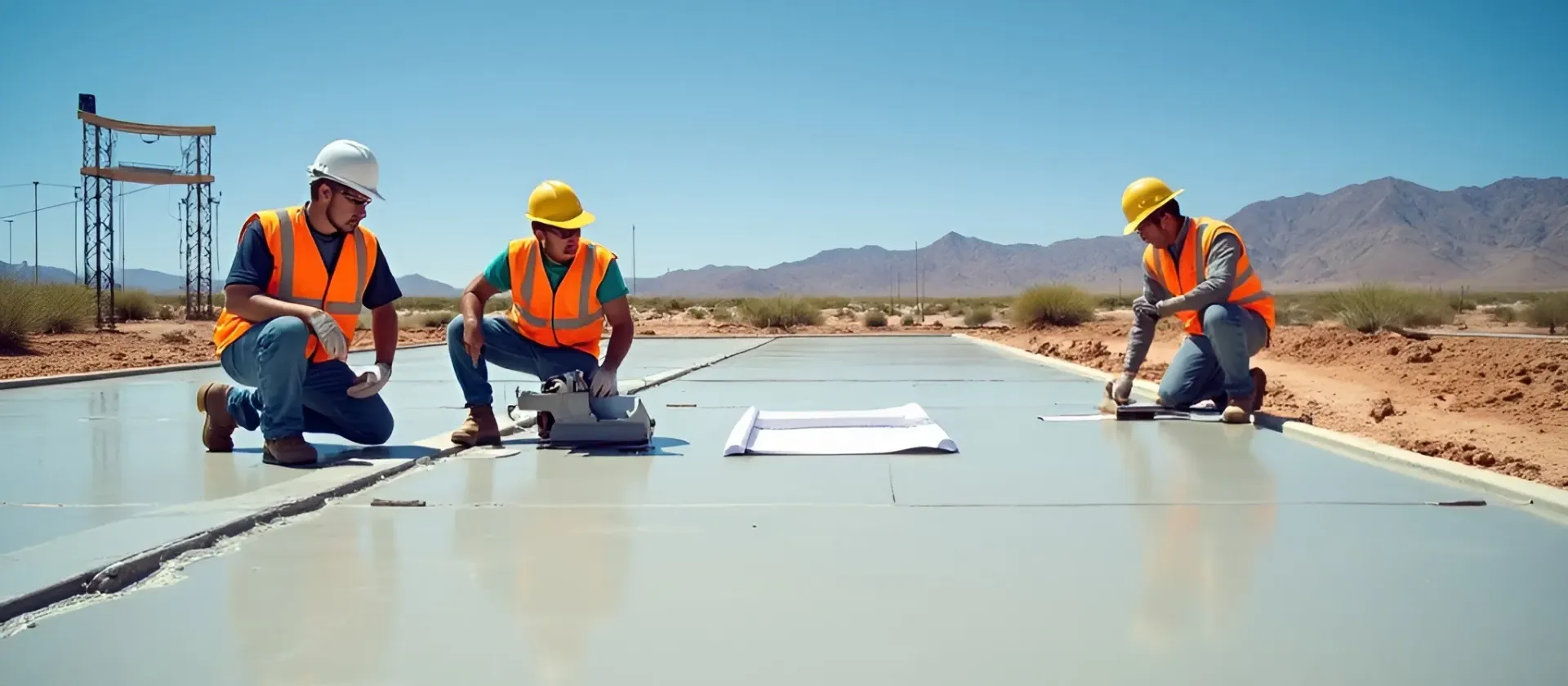Best Practices for Commercial Concrete Installation in Hot Climates
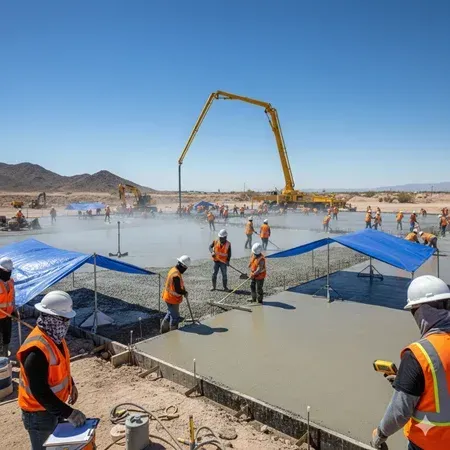
Undoubtedly, concrete is the backbone and main material for many commercial projects, such as warehouses, offices, shopping centers, and industrial facilities. However, handling concrete in hot climates demands special expertise. That’s why it is important to understand the best practices for commercial concrete installation in hot weather to get lasting results.
In this blog, we will discuss how business owners, contractors, and project managers can ensure the quality performance of concrete during commercial projects, particularly in temperature-sensitive areas, by using these practices.
Using Concrete in Hot Climates
Hot climates are places with temperatures higher than 25°C or 77°F. Concrete needs proper temperature levels to cure and settle. This is why extremely high temperatures greatly affect the curing of concrete, causing rapid yet abnormal moisture loss. As a result, the surface splits and shrinks, and the humidity levels instantly decrease below normal.
Moreover, longer setting times make concrete even more challenging to lay and finish, especially when large quantities of material are poured for commercial purposes like concrete foundations. If not promptly addressed, this can result in costly repairs or numerous structural issues.
Installation of Concrete in Hot Weather: Best Practices
Schedule Work During Cooler Hours
Timing is essential for hot-weather concrete. You can take the following measures to minimize the impact of high temperatures:
- Schedule concrete installation during cooler parts of the day, such as early morning or late evening. It reduces heat exposure, allowing more time for proper concrete curing.
- Examine weather forecasts for temperature, humidity, and wind speed, as these factors directly influence evaporation rate.
- For large commercial projects, break the concrete pour into smaller parts to effectively manage setting times.
Avoid Delays in Placement
Once the concrete mix is ready, quickly finish and place it for proper setting. Delays can cause early stiffening, which makes the concrete harder to work with. Therefore, make sure to coordinate between the batching plant and the site team for efficient results, especially on time-sensitive projects like concrete driveways.
Shade the Materials
Concrete mixtures and cement that are stored in the direct sun can become scorched. Thus, putting materials in the shade or covering them with tarps before mixing keeps them cooler and stops the batch from getting too hot.
Adjust the Mix Design
The concrete mix plays a pivotal role in hot weather conditions. Important design adjustments may include:
- Use of retarders
- Lower cement content
- Use cool or chilled water for mixing
Pro Tip: Test the mix design on a small area to ensure it meets the strength and durability requirements for long-lasting parking lots.
Proper Curing
Indeed, curing is the most significant step in commercial concrete installation, especially in hot climates. Proper curing ensures the concrete achieves its desired strength and has adequate moisture and temperature.
In hot weather, curing must begin immediately after finishing. It helps to prevent plastic shrinkage and cracks in the surface, whether it’s a small concrete patio or a large commercial slab.
Incorporate Latest Technology, Get Precise Results
In hot regions, modern technology can improve the quality of commercial concrete installation. The latest construction tools and inventions allow you to:
- Use sensors to check the concrete's temperature and moisture levels inside.
- Drones and thermal imaging help identify spots or areas prone to cracking during large pours.
- Adjust curing methods as needed.
- Get real-time insights to optimize the process and ensure long-term durability.
Hire Trained Staff
A well-trained staff is the key to successful commercial concrete installation in hot climates. They help to maintain and increase the productivity and safety of your project. From
concrete driveways
to large-scale
parking lots, experienced crews know how to adapt mixes, curing methods, and scheduling to avoid costly mistakes.
Ensure your team is aware of hot weather concreting practices. Equip workers with proper construction tools and personal protective equipment to work in high temperatures, such as cooling vests and hydration stations.
Post-Installation Inspections
Once the concrete has settled, perform detailed inspections to look for cracks, surface flaws, or other problems. Moreover, address even small problems right away because they could get worse over time. Whether it’s concrete foundations or outdoor patio projects, ongoing inspections help guarantee long-term strength and durability.
Proper Hot-Weather Practices = Long-Term Benefits
Commercial property developers and contractors can avoid expensive repairs and structural failures in the future by following these steps.
Proper and high-quality commercial concrete installation ensures:
- Longer project lifespan.
- Better surface finishes.
- Reduced cracking and maintenance costs.
- Stronger and more durable building structures.
- Increased commercial appeal and property value.
Conclusion
When installing commercial concrete in hot regions, prepare and plan carefully, use different yet specialized methods, and pay close attention to every little detail. Contractors can overcome the challenges of concrete installation in high temperatures by scheduling their work hours, optimizing the mix design, protecting the concrete during placement, and prioritizing proper curing.
Ready to ensure your concrete installation stands against scorching heat? Let's discuss and explore the best practices for flawless commercial concrete installation in hot climates to avoid cracks, ensure durability, and keep track of your project.
